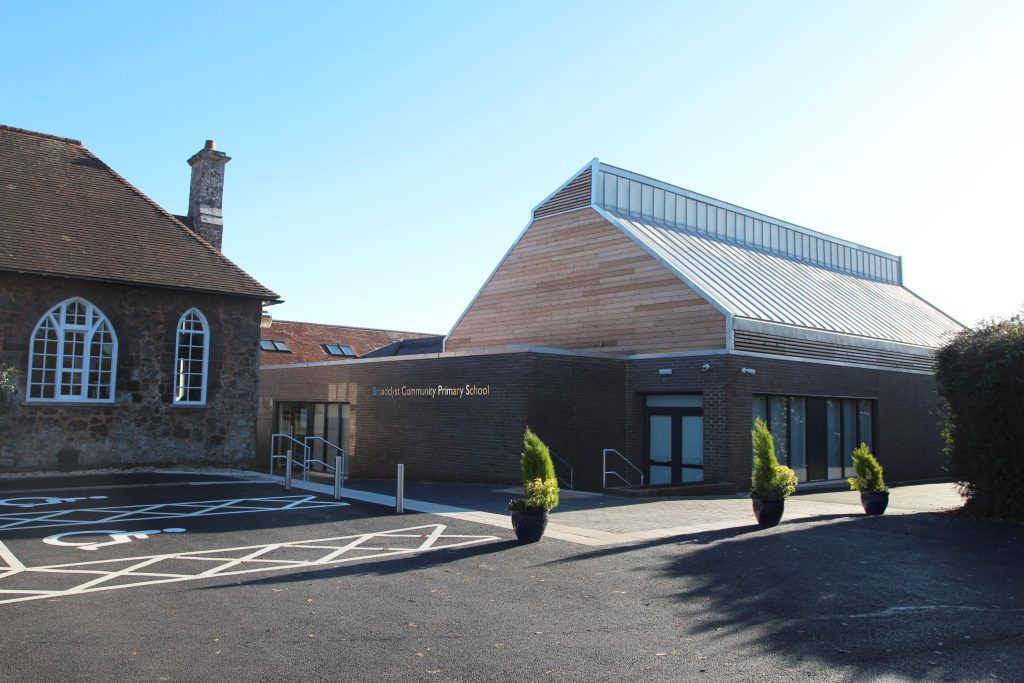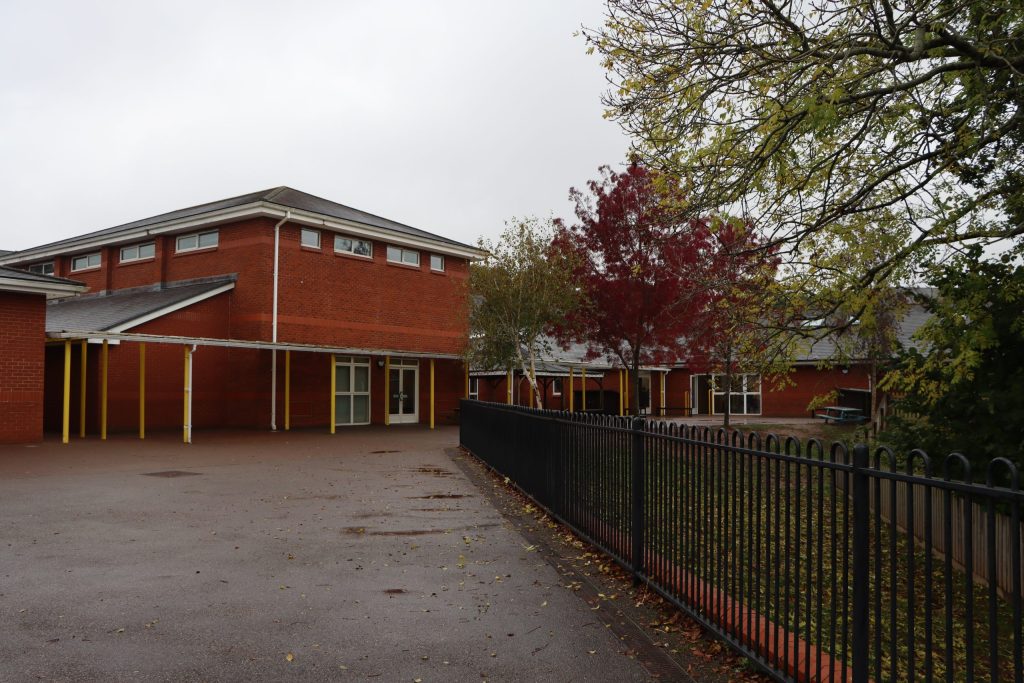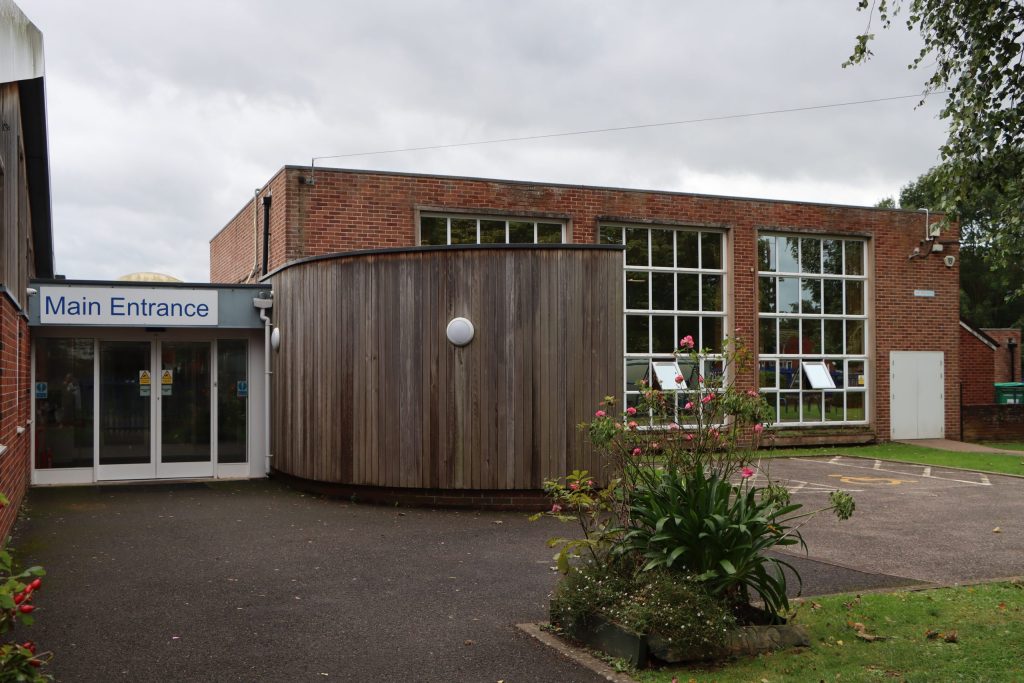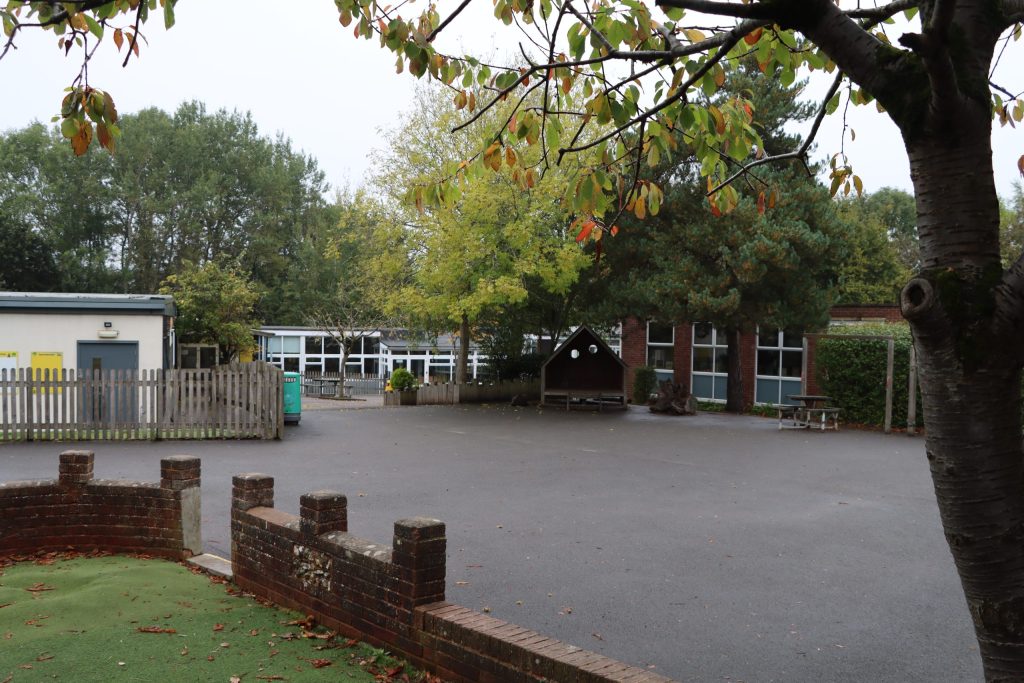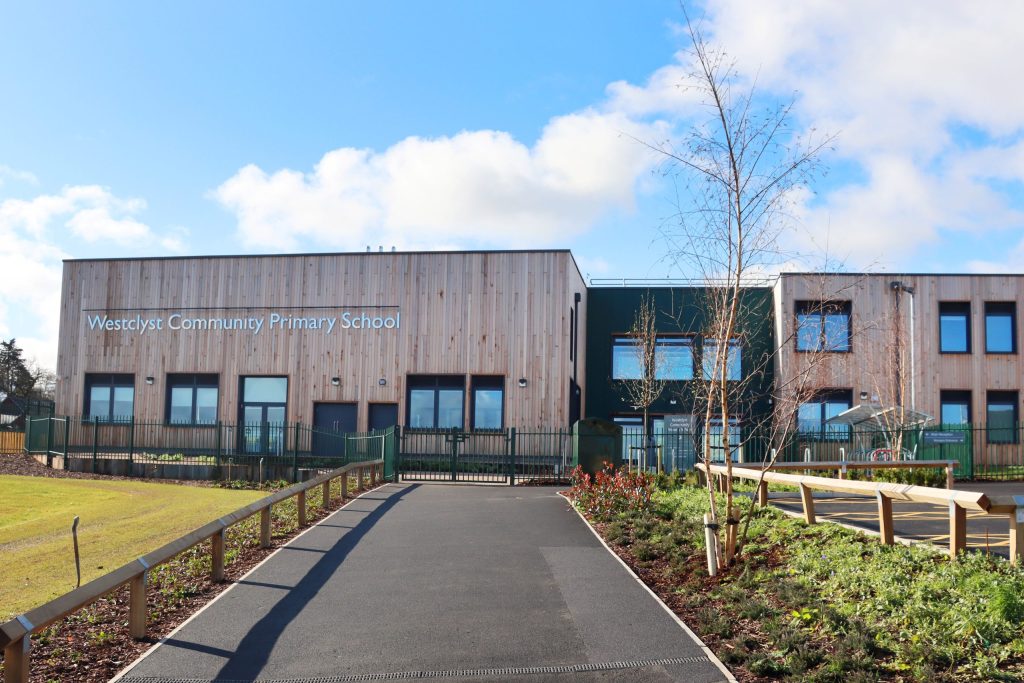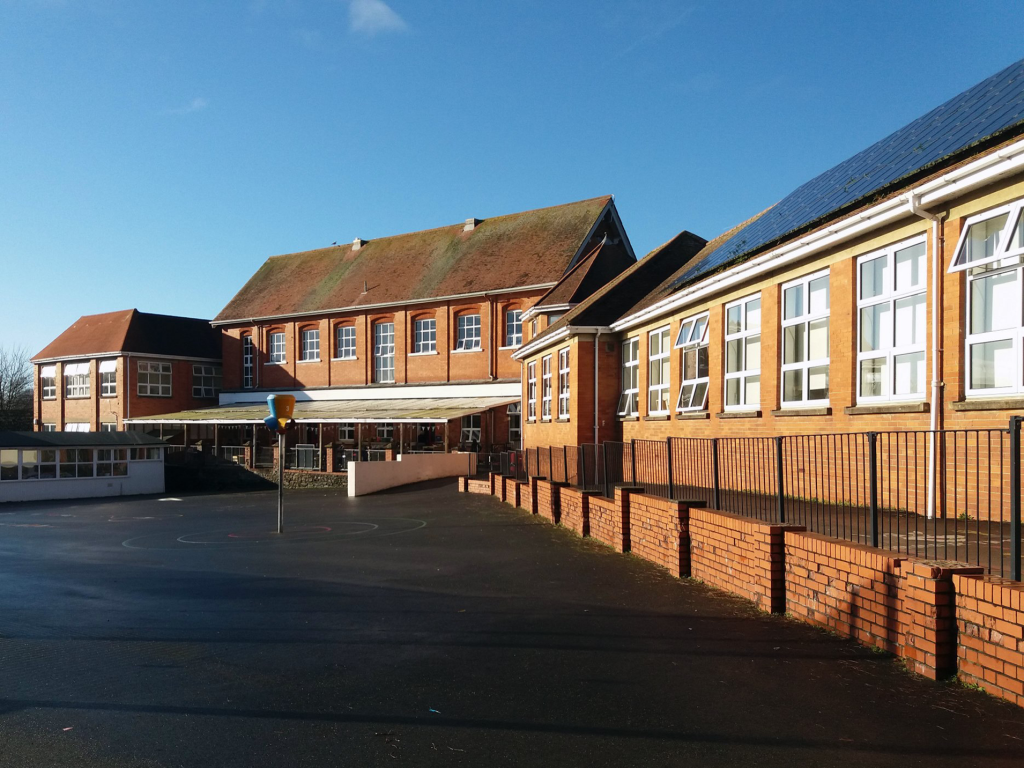Music
Music curriculum provides a rich and progressive learning experience from the early years to Year 6. Children explore singing, listening, composing, and performing through diverse musical styles, instruments, and traditions. Using high-quality schemes such as Charanga and Sing Up, pupils develop essential musical skills including rhythm, pitch, tempo, and notation. From tuned percussion in EYFS to ukuleles, violins, recorders, and samba in later years, each child has hands-on opportunities to create and enjoy music. The curriculum also promotes confidence, collaboration, and creativity through performances, ensemble work, and digital music projects.
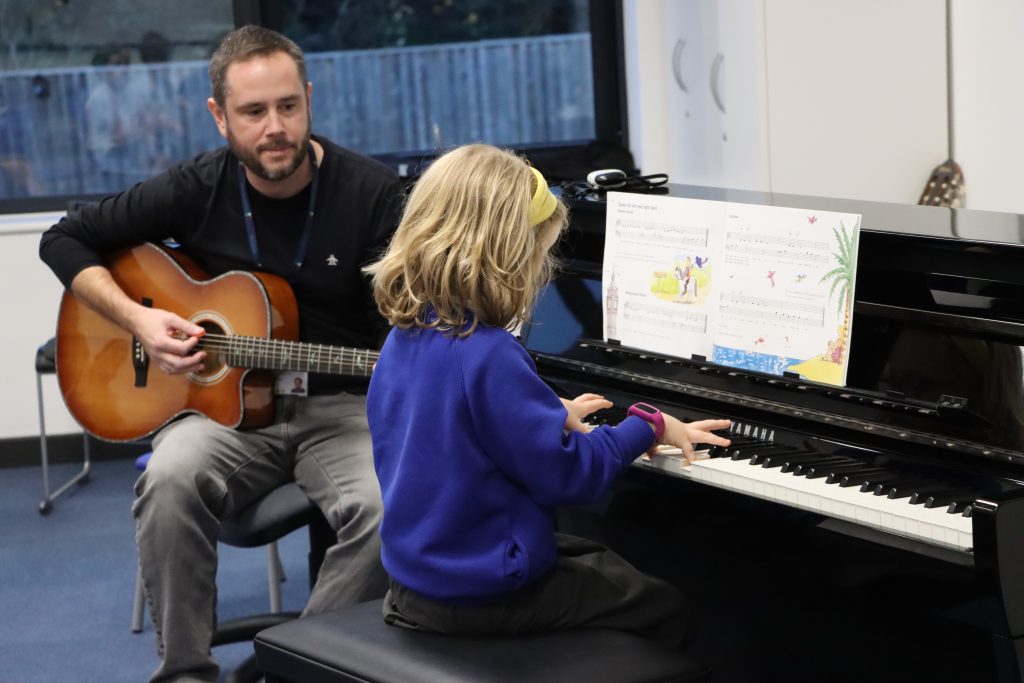
Nursery
In Nursery, pupils are introduced to music through joyful and interactive experiences. They explore rhythm, pitch, and sound using their voices, instruments, and movement. Children sing familiar nursery rhymes and songs, join in with call-and-response games, and begin to keep a steady beat. They use simple percussion instruments to explore different sounds and enjoy moving to music in creative ways. Music is woven into daily routines and story times, helping children to develop listening skills, memory, and confidence in expressing themselves through sound and movement.
Autumn Term
Term 1
Let’s be friends!
This unit is all about making friends, turn-taking, sharing, working together, and building confidence and unity in a classroom full of new faces.
Song bank:
- Hello, let’s go!
- Let’s be friends
- Pass the secret round
- The high 5 chant
Watch and listen:
- Let’s be friends! Lyric video
- Meet the musician… Jessie on clarinet! Video
- Let’s be friends! Action video
Term 2
Travel and movement
This unit is all about different ways that we can move and travel from one place to another. Whether we move our bodies in different ways to get around, or if we get on a train, bus, or car… What about if we could fly? Let’s see where our imaginations take us!
Song bank:
- How did you get to school today?
- This my walking song
- Get on the train
Watch and listen:
- This my walking song – Live video
- Get on the train – Lyric video
- Get on the train – Virtual jam video
- Meet the musician – Beka on violin – Video
- Emporer Penguins migrating – National GeographicVideo
- Soar with migrating birds – National Geographic Video
- How would it feel? – Listening sample
- Red, red scooter – Listening sample
Resources Needed: Tuned and Untuned Percussion
Spring Term
Term 1
This is me
This unit is all about exploring who we are! How we say hello, how old we are, our families, our likes and dislikes, and what makes us special and unique.
Song bank:
- Isay hello like this
- The family song
- Yes I can!
- We’re all amazing
- This is me, I am 3
Watch and listen:
- Assumptions of gender roles! Video
- We’re all amazing Lyric video
- We’re all amazing Live musician video
- Yes I can! Lyric video This is me, I am 3 Demonstration video
- Questions – Demonstration video
- Meet the musician… Rosie on handpan Video
- Don Quixote by Carlos Acosta Video
- A day in the life of a child
Term 2
Animal tea Party
This unit is all about an animal tea party! We’ll be asking the children to invite their own cuddly toys, as well as baking some delicious cakes for the party. We’ll also be exploring animal movements and sounds, and will be discovering some musical terms through the song and activity Bang my drum
Song bank:
- I see animals!
- Animal circle time
- Bake, bake, bake
- Animal tea party
- Bang my drum
Watch and listen:
- Animal tea party Lyric video
- Animal rhythms Activity video
- Animal rhythms Rhythmic backing track
- Bang my drum Lyric video
- Our animal songs Playlist
- Twinkle, twinkle little star by Zosia on cello Video
- Makaton signs for bake and cake Video
Summer Term
Term 1
I’ve got feelings
This unit is all about exploring our feelings and emotions. Music is an incredible tool to express our feelings through song, which we will do in the some of the songs and warm ups, but we’ll also be exploring the breadth of different emotions through sounds and music that we listen to. What do certain sounds make us feel? How could we express our own feelings through the sounds and music that we make?
Song bank:
- How are you?
- Happy happy happy
- I’ve got feelings
Watch and listen:
- Introduction to the unit Video
- Happy happy happy Lyric video
- Happy happy happy Makaton demonstration
- I’ve got feelings Lyric video
- A stormy soundscape Body precussion video
- A stormy soundscape With instruments video
- Meet the musician… Jessie on clarinet! Video
- Meet the musician… Rosanna on the flute! Video
- Inside out: guessing the feeling Video
- Musical feelings Listening track
Term 2
Let’s jam!
This unit is all about developing our love for music, exploring different sounds and instruments, as well as playing together as a ‘band’ and in small groups. In a culture where often being a ‘singer’ or a musician is associated with TV auditions, pop stars, and celebrities, we want to emphasise the importance of enjoying music for music’s sake! There’s so much joy to be found in taking part in ensembles, singing together, and freedom in playing freely through improvisation. Having fun making music can have a huge impact on the cohesion of your class, and the wellbeing of the children.
Song bank:
- Tap your name
- Let’s Jam!
- Shake and stop
- Who’s in the band?
Watch and listen:
- Let’s jam – Musician video
- Meet the musician – Raph on trombone – Video
- Meet the musician – Rosie on cajon – Video
Objectives Covered
Objective Covered from the Model Music Curriculum
SingUp documents:
SingUp overview document
The Singup scheme is used alongside The Music Development matter documents which can be found here: Music Development Matters
Reception
In Reception, pupils build on their early musical experiences by exploring a wider range of songs, rhythms, and instruments. They learn to sing in tune, follow musical patterns, and perform simple compositions using classroom instruments. Children explore musical styles such as funk and classical, and they begin to understand musical elements like tempo, dynamics, and pitch. Through singing, dancing, and performing, pupils develop confidence, coordination, and creativity. Music is also linked to topics and celebrations, giving children opportunities to perform for others and enjoy music as a shared experience.
Autumn Term
Term 1
Follow the Autumn 1 series of lessons that will consist of the following.
Charanga- Autumn 1- Me!
Main Songs:
Pat-a-cake , 1, 2, 3, 4, 5, Once I Caught a Fish Alive , This Old Man, Five Little Ducks , Name Song Things For Fingers
Cross-curricular focus:
Growing, homes, colour, toys, how I look.
Explore and Create Musical Activities that embed pulse, rhythm and pitch, explore voices and classroom instruments.
Games Track:
Find the pulse.
Copy Cat Rhythm Games
Copy-clap the rhythm of names.
High and Low Games
Explore high sounds and low sounds using voices and glockenspiels.
Term 2
Follow the Autumn 2 series of lessons that will consist of the following.
Charanga- Autumn 2- My stories
Main Songs:
I’m A Little Teapot The Grand Old Duke Of York Ring O’ Roses Hickory Dickory Dock Not Too Difficult The ABC Song
Cross-curricular focus:
Imagination, Christmas, festivals, fairies, pirates, treasure, superheroes, let’s pretend, once upon a time.
Explore and Create Musical Activities that embed pulse, rhythm and pitch, explore voices and classroom instruments.
Games Track:
Find the pulse as one of the characters from the song.
Copy-Cat Rhythm Games
Copy-clap the rhythm of small phrases from the songs.
High and Low Games
Explore high pitch and low pitch in the context of the songs.
Create your own Sounds using instruments
Invent a pattern to go with a song using one note.
Resources Needed: N-untuned percussion R-turned and untuned percussion
Spring Term
Term 1
Follow the Spring 1 series of lessons that will consist of the following.
Charanga- spring 1- Everyone!
Main Songs:
Wind The Bobbin Up, Rock-a-bye Baby, Five Little Monkeys Jumping On The Bed, Twinkle Twinkle, If You’re Happy And You Know It, Head, Shoulders, Knees And Toes
Cross-curricular focus:
Family, friends, people, music from around the world..
Explore and Create Musical Activities that embed pulse, rhythm and pitch, explore voices and classroom instruments.
Games Track:
Invent ways to find the pulse.
Copy Cat Rhythm Games
Copy-clap some rhythms of phrases from the songs.
High and Low Games
Explore high pitch and low pitch in the context of the songs.
Create your own Sounds using instruments
Use the starting note to explore melodic patterns using one or two notes
Term 2
Follow the Spring 2 series of lessons that will consist of the following.
Charanga- Spring 2- Our World
Main Songs:
Old Macdonald, Incy Wincy Spider, Baa Baa Black Sheep, Row, Row, Row Your Boat, The Wheels On The Bus, The Hokey Cokey
Cross-curricular focus:
Animals, jungle, minibeasts, night and day, sand and water, seaside, seasons, weather, sea, space.
Explore and Create Musical Activities that embed pulse, rhythm and pitch, explore voices and classroom instruments.
Games Track:
Find the pulse and show others your ideas.
Copy-Cat Rhythm Games
Copy-clap some rhythms of phrases from the songs.
High and Low Games
Explore high pitch and low pitch using the images from the songs
Create your own Sounds using instruments
Use the starting note to explore melodic patterns using one or two notes.
Summer Term
Term 1
Follow the Summer 1 series of lessons that will consist of the following.
Charanga- Summer 1- Big Bear Funk
Main Songs:
Big Bear Funk
Cross-curricular focus:
Transition unit.
Explore and Create Musical Activities that embed pulse, rhythm and pitch, explore voices and classroom instruments.
Games Track:
Find a funky pulse.
Copy Cat Rhythm Games
Copy-clap 3 or 4 word phrases from the song.
High and Low Games A. Play Together
Keep the beat of the song with a pitched note.
High and Low Games B. Pitch Activities
Add pitched notes to the rhythm of the words or phrases in the song.
High and Low Games C. Extended Options
Enjoy playing patterns using a combination of any of the three notes C, D and E.
Term 2
Follow the Summer 2 series of lessons that will consist of the following.
Charanga- Summer 2 – Reflect, rewind and replay
Main Songs:
Big Bear Funk Baa Baa Black Sheep Twinkle Twinkle, Incy Wincy Spider, Rock-a-bye Baby Row, Row, Row Your Boat
Cross-curricular focus:
Consolidate learning and contextualise the history of music.
Explore and Create Musical Activities that embed pulse, rhythm and pitch,explore voices and classroom instruments.
Revise existing in all other areas.
Objectives Covered
Charanga supporting documents:
Year 1
In Year 1, children build their musical understanding through singing, rhythm games, and using instruments like boomwhackers and xylophones. They explore beat, pitch, tempo, and begin simple improvisation and composition.
Autumn Term
Term 1
Introducing Beat: Follow the Autumn 1 series of lessons that will consist of the following.
Charanga- Autumn 1- Introducing the beat
Term 2
Adding Rhythm and Pitch- Follow the Autumn 2 series of lessons that will consist of the following.
Charanga- Autumn 1- Adding rhythm and pitch
Resources Needed: Boomwhackers, Chime Bars, Xylophones
Spring Term
Term 1
Introducing Tempo and Dynamics- Follow the Spring 1 series of lessons that will consist of the following.
Charanga- Spring 1- Introducing tempo and dynamics
Term 2
Combining Pulse, Rhythm and Pitch- Follow the Spring 2 series of lessons that will consist of the following.
Charanga- Spring 2- Combining pulse rhythm and pitch
Summer Term
Term 1
Having Fun with Improvisation- Follow the Summer 1 series of lessons that will consist of the following.
Charanga- Summer 1- Having fun with improvisation
Term 2
Explore Sound and Create a Story- Follow the Summer 2 series of lessons that will consist of the following.
Charanga- Summer 2- Explore sound and create a story
Objectives Covered
Model Music curriculum new objectives that should be covered in Year 1. New vocabulary is in a bold font.
Singing:
- Sing simple songs, chants and rhymes) from memory, singing collectively and at the same pitch, responding to simple visual directions (e.g. stop, start, loud, quiet) and counting in.
- Begin with simple songs with a very small range, mi-so. Include pentatonic songs
- Sing a wide range of call and response songs to control vocal pitch and to match the pitch they hear with accuracy.
Listening- These styles of music should be introduced
Western Classical Tradition and Film:
- Classical e.g Mozart
- 20th Century e.g Holst
Popular Music:
- Art pop e.g Kate Bush
- Blues e.g Ma Rainey
Musical Traditions
- Brazil- Samba e.g Sergio Mendes/Carlinhos Brown
Composing
- Improvise using question and answer phrases.
- Create short sequences of sounds in response to stimuli.
- Understand the difference between creating a rhythm pattern and pitch pattern.
- Use music technology.
- Recognise how graphic notation can represent created sounds.
Musicianship
Pulse/Beat
- Walk, move or clap a steady beat with others, changing the speed of the beat as the tempo of the music changes.
- Use body percussion and classroom percussion playing repeated rhythm patterns (ostinati) and short, pitched patterns on tuned instruments to maintain a steady beat
- Respond to the pulse in recorded/live music through movement and dance
Rhythm
- Perform short copycat rhythm patterns accurately, led by the teacher
- Perform short repeating rhythm patterns (ostinati) while keeping in time with a steady beat.
- Perform word-pattern chants (e.g. ca-ter-pil-lar crawl, fish and chips); create, retain and perform their own rhythm patterns
Pitch
- Listen to sounds in the local school environment, comparing high and low sounds.
- Sing familiar songs in both low and high voices and talk about the difference in sound.
- Explore percussion sounds to enhance storytelling.
- Follow pictures and symbols to guide singing and playing, e.g. 4 dots = 4 taps on the drum.
Year 2
In Year 2, children develop their musical skills through singing, drumming, and playing xylophones. They explore rhythm, pitch, dynamics, and begin to compose and improvise simple musical patterns.
Autumn Term
Term 1
Exploring Simple Patterns-Each music lesson should have a combination of singing, listening, composing and musicianship (pulse/beat, rhythm and pitch)
These activities can be found on Charanga using the below link and should be used in conjunction with teacher planning incorporating drumming and xylophones.
Term 2
Focus on Dynamics and Tempo
Each music lesson should have a combination of singing, listening, composing and musicianship (pulse/beat, rhythm and pitch)
These activities can be found on Charanga using the below link and should be used in conjunction with teacher planning incorporating drumming and xylophones.
Resources Needed: Drums Xylophones, Glockenspiels
Spring Term
Term 1
Exploring Feelings Through Music
Each music lesson should have a combination of singing, listening, composing and musicianship (pulse/beat, rhythm and pitch)
These activities can be found on Charanga using the below link and should be used in conjunction with teacher planning incorporating drumming and xylophones.
Term 2
Inventing a Musical Story
Each music lesson should have a combination of singing, listening, composing and musicianship (pulse/beat, rhythm and pitch)
These activities can be found on Charanga using the below link and should be used in conjunction with teacher planning incorporating drumming and xylophones.
Summer Term
Term 1
Music That Makes you Dance
Each music lesson should have a combination of singing, listening, composing and musicianship (pulse/beat, rhythm and pitch)
These activities can be found on Charanga using the below link and should be used in conjunction with teacher planning incorporating drumming and xylophones.
Term 2
Exploring Improvisation
Each music lesson should have a combination of singing, listening, composing and musicianship (pulse/beat, rhythm and pitch)
These activities can be found on Charanga using the below link and should be used in conjunction with teacher planning incorporating drumming and xylophones.
Objectives Covered
Model Music curriculum new objectives that should be covered in Year 2. New vocabulary is in a bold font.
Singing:
- Sing songs regularly with a pitch range of do-so with increasing vocal control.
- Sing songs with a small pitch range, pitching accurately.
- Know the meaning of dynamics (loud/quiet) and tempo (fast/slow) and be able to demonstrate these when singing by responding to (a) the leader’s directions and (b) visual symbols (e.g. crescendo, decrescendo, pause)
Listening- These styles of music should be introduced
Western Classical Tradition and Film:
- 20th Century e.g Anna Cylne
- 20th Century e.g Ravel
Popular Music:
- Rock N Roll e.g Elvis Presley
- Pop e.g The Beatles
Musical Traditions
- Indonesia- Gamelan e.g Gong Kebyar of Peliatan
Composing
- Create music in response to a non-musical stimulus
- Work with a partner to improvise simple question and answer phrases, to be sung and played on untuned percussion, creating a musical conversation.
- Use graphic symbols, dot notation and stick notation
- Use music technology to compose.
Musicianship
Pulse/Beat
- Understand that the speed of the beat can change (tempo).
- Mark the beat of a listening piece by tapping or clapping and recognising tempo as well as changes in tempo.
- Walk in time to the beat of a piece of music or song. Know the difference between left and right to support coordination and shared movement with others.
- Begin to group beats in twos and threes by tapping knees on the first (strongest) beat and clapping the remaining beats.
- Identify the beat groupings in familiar music that they sing regularly and listen to.
Rhythm
- Play copycat rhythms, copying a leader, and invent rhythms for others to copy on untuned percussion.
- Create rhythms using word phrases as a starting point
- Read and respond to chanted rhythm patterns, and represent them with stick notation including crotchets, quavers and crotchets rests.
- Create and perform their own chanted rhythm patterns with the same stick notation.
Pitch
- Play a range of singing games based on the cuckoo interval matching voices accurately, supported by a leader playing the melody.
- Sing short phrases independently within a singing game or short song.
- Respond independently to pitch changes heard in short melodic phrases, indicating with actions.
- Recognise dot notation and match it to 3-note tunes played on tuned percussion.
Year 3
In Year 3, children learn to play the ukulele, explore music theory, and create digital compositions. They develop their skills in rhythm, pitch, and performance through engaging practical activities.
Autumn Term
Term 1
Ukuleles
Play ukulele | Sing Up
Chord C
Chord F
Pluck tunes using notes A B and C
Term 2
Ukuleles
Chord G7
Single and double strummin
Resources Needed: Ukuleles
Spring Term
Term 1
Digital Compositions
- Linked to Roman project- battle music or music to link with Boudicca speech writing.
- Music notepad on Charanga can be used.
Term 2
Music Theory
The children should learn technical terms that give context to music that they have previously heard. How these are taught are up to the teacher. These terms should also be taught throughout other academic terms.
Rhythm, metre and tempo:
Downbeats, fast (allegro), slow (adagio), pulse, beat
Pitch and Melody
High, low, rising, falling; pitch range do–so
Structure and Form
Call and response; question phrase, answer phrase, echo, ostinato
Harmony
Drone
Texture
Unison, layered, solo
Dynamics and Articulation
Loud (forte), quiet (piano)
Instruments and Playing Techniques
Instruments used in Foundation Listening
Summer Term
Term 1
Ukuleles
Ukuleles
End of term performance
Objectives Covered
Model Music Curriculum:
- Indicative musical features should be covered within the half term focusing on Music theory. These terms will then be revisited in other terms and year groups.
Model Music curriculum new objectives that should be covered in Year 3. New vocabulary is in a bold font.
Singing:
- Sing a widening range of unison songs of varying styles and structures with a pitch range of do–so, tunefully and with expression. Perform forte and piano
- Perform actions confidently and in time to a range of action songs
- Walk, move or clap a steady beat with others, changing the speed of the beat as the tempo of the music changes.
- Perform as a choir in school assemblies.
Listening- These styles of music should be introduced
Western Classical Tradition and Film:
- Baroque e.g Handel
- Romantic e.g Mussorgsky
- 21st Century e.g A.R.Rahman
Populer Music:
- Funk e.g James Brown
Musical Traditions
- India- Indian Classical e.g Kishori Amonkar
Improvise
- Become more skilled in improvising (using voices, tuned and untuned percussion and instruments), inventing short ‘on-the-spot’ responses using a limited note-range.
- Structure musical ideas (e.g. using echo or question and answer phrases) to create music that has a beginning, middle and end.
Compose
- Combine known rhythmic notation with letter names to create rising and falling phrases using just three notes (do, re and mi)
- Compose song accompaniments on untuned percussion using known rhythms and note values.
Performing
- Develop facility in playing tuned percussion or a melodic instrument such as an ukulele. Play and perform melodies following staff notation using a small range (e.g. Middle C–E/do–mi) as a whole class or in small groups (e.g. trios and quartets).
- Use listening skills to correctly order phrases using dot notation
- Individually (solo) copy stepwise melodic phrases with accuracy at different speeds; allegro and adagio, fast and slow.
Reading notation
- Introduce the stave, lines and spaces, and clef. Use dot notation to show higher or lower pitch.
- Introduce and understand the differences between crotchets and paired quavers.
- Apply word chants to rhythms, understanding how to link each syllable to one musical note.
Year 4
In Year 4, children develop instrumental skills through whole-class violin or brass lessons. They build on music theory, learn to read notation, and perform in ensembles, deepening their understanding of pitch, rhythm, and musical structure.
Autumn Term
Term 1
Ukuleles recap of chords and Music Theory
The children should learn technical terms that give context to music that they have previously heard. How these are taught are up to the teacher. These terms should also be taught throughout other academic terms.
Rhythm, metre and tempo:
Getting faster (accelerando), Getting slower (rallentando), Bar, metre
Pitch and Melody
Pentatonic scale, major and minor tonality, pitch range do–do
Structure and Form
Rounds and partner songs, repetition, contrast
Harmony
Static, moving
Texture
Duet, melody and accompaniment
Dynamics and Articulation
Getting louder (crescendo), getting softer (decrescendo); legato (smooth), staccato (detached)
Instruments and Playing Techniques
Instruments used in Foundation Listening including playing techniques
Term 2
Digital compositions
- To link with Roald Dahl revolting rhymes project. Music to be played at the start of the script.
- Ukuleles can be used to compose to revise knowledge from the previous year.
Resources Needed: Brass/Violine
Spring Term
Term 1
Brass BC and WC
Brass BC and WC
Violins YV
Violin objectives to be covered:
- The Names of the parts of the Violin
- Where the fingers Go
- Learning the 4 violin strings – pitch
- Resting Position
- Plucking on the D string
- Putting the Fingers on String D
- Plucking on the D and A string
- Playing on the Shoulder – plucking (pizzicato)
- Holding the Bow
- Where to Place the Bow
- Using the Bow on Open Strings (arco)
- Bowing using Fingers on the String
Follow Charanga English Model Music Curriculum for listening activities. Each lesson should have singing, listening composing and performing. Use the objectives covered column to check.
Charanga- Stringbabies violin music can be used alongside the lessons.
Term 2
Brass BC and WC
Violins YV
Violin objectives to be covered:
- The Names of the parts of the Violin
- Where the fingers Go
- Learning the 4 violin strings – pitch
- Resting Position
- Plucking on the D string
- Putting the Fingers on String D
- Plucking on the D and A string
- Playing on the Shoulder – plucking (pizzicato)
- Holding the Bow
- Where to Place the Bow
- Using the Bow on Open Strings (arco)
- Bowing using Fingers on the String
Follow Charanga English Model Music Curriculum for listening activities. Each lesson should have singing, listening composing and performing. Use the objectives covered column to check.
Charanga- Stringbabies violin music can be used alongside the lessons.
Summer Term
Term 1
Brass Band BC and WC
Violins YV
Violin objectives to be covered:
- The Names of the parts of the Violin
- Where the fingers Go
- Learning the 4 violin strings – pitch
- Resting Position
- Plucking on the D string
- Putting the Fingers on String D
- Plucking on the D and A string
- Playing on the Shoulder – plucking (pizzicato)
- Holding the Bow
- Where to Place the Bow
- Using the Bow on Open Strings (arco)
- Bowing using Fingers on the String
Follow Charanga English Model Music Curriculum for listening activities. Each lesson should have singing, listening composing and performing. Use the objectives covered column to check.
Charanga- Stringbabies violin music can be used alongside the lessons.
Term 2
Brass BC and WC
Violins YV
Violin objectives to be covered:
- The Names of the parts of the Violin
- Where the fingers Go
- Learning the 4 violin strings – pitch
- Resting Position
- Plucking on the D string
- Putting the Fingers on String D
- Plucking on the D and A string
- Playing on the Shoulder – plucking (pizzicato)
- Holding the Bow
- Where to Place the Bow
- Using the Bow on Open Strings (arco)
- Bowing using Fingers on the String
Follow Charanga English Model Music Curriculum for listening activities. Each lesson should have singing, listening composing and performing. Use the objectives covered column to check.
Charanga- Stringbabies violin music can be used alongside the lessons.
End of term ensemble performances for all of Year 4 to parents
Objectives Covered
Model Music Curriculum:
- Indicative musical features should be covered within the half term focusing on Music theory. These terms will then be revisited in other terms and year groups.
Model Music curriculum new objectives that should be covered in Year 4. New vocabulary is in a bold font.
Singing:
- Continue to sing a broad range of unison songs with the range of an octave pitching the voice accurately and following directions for getting louder (crescendo) and quieter (decrescendo).
- Sing rounds and partner songs in different time signatures and begin to sing repertoire with small and large leaps as well as a simple second part to introduce vocal harmony.
- Perform a range of songs in school assemblies.
Listening- These styles of music should be introduced
Western Classical Tradition and Film:
- Classical- Beethoven
- Early- Hildegard
- 20th Century- Rutter
Popular Music:
- Jazz- Billy Strayhorn/ Duke Ellington Orchestra
- 90s Indie- Oasis
Musical Traditions
- Punjab/UK- Bhangra- Bhujhangy Group
- Trinida- Calypso- Trinidad Steel Band
Improvise
- Improvise on a limited range of pitches on the instrument they are now learning, making use of musical features including smooth (legato) and detached (staccato).
- Begin to make compositional decisions about the overall structure of improvisations. Continue this process in the composition objectives below.
Compose
- Combine known rhythmic notation with letter names to create short pentatonic phrases using a limited range of 5 pitches. Sing and play these phrases as self-standing compositions.
- Arrange individual notation cards of known note values (i.e. minim, crotchet, crotchet rest and paired quavers) to create sequences of 2-, 3- or 4-beat phrases, arranged into bars.
- Compose music to create a specific mood, for example creating music to accompany a short film clip.
- Introduce major and minor chords.
- Include instruments played in whole-class/group/individual teaching to expand the scope and range of the sound palette available for composition work.
- Capture and record creative ideas using any of: graphic symbols, rhythm notation and time signatures, staff notation and technology.
Performing
- Develop facility in the basic skills of Violin/Brass over two terms.
- Play and perform melodies following staff notation using a small range
- Perform in two or more parts (e.g. melody and accompaniment or a duet) from simple notation using instruments played in whole class teaching. Identify static and moving parts. 28
- Copy short melodic phrases including those using the pentatonic scale (e.g. C, D, E, G, A).
Reading notation
- Introduce and understand the differences between minims, crotchets, paired quavers and rests.
- Read and perform pitch notation within a defined range.
- Follow and perform simple rhythmic scores to a steady beat: maintain individual parts accurately within the rhythmic texture, achieving a sense of ensemble
Year 5
In Year 5, children learn to play the recorder and toot, explore digital music, and develop their understanding of musical notation, dynamics, and composition through a range of engaging activities.
Autumn Term
Term 1
Recorders and Toots
Tunes on B A and G
E and D
High C and High D
Charanga resources to teach it- Blown away
Term 2
Recorders and Toots
End of term performance
Resources Needed: Recorders and Toots
Spring Term
Term 1
Digital Music
Term 2
Music Theory
The children should learn technical terms that give context to music that they have previously heard. How these are taught are up to the teacher. These terms should also be taught throughout other academic terms.
Rhythm, metre and tempo:
Simple time, compound time, syncopation
Pitch and Melody
Full diatonic scale in different keys
Structure and Form
Ternary form, verse and chorus form, music with multiple sections
Harmony
Triads, chord progressions
Texture
Music in 3 parts, music in 4 parts
Dynamics and Articulation
Wider range of dynamics including fortissimo (very loud), pianissimo (very quiet), mezzo forte (moderately loud) and mezzo piano (moderately quiet)
Instruments and Playing Techniques
Instruments used in Foundation Listening including playing techniques and effects, for example pizzicato (e.g. mysterious) and tremolo (e.g. dark and expectant)
Summer Term
Term 1
Recorders and Toots
Term 2
Recorders and Toots
Objectives Covered
Model Music Curriculum:
- Indicative musical features should be covered within the half term focusing on Music theory. These terms will then be revisited in other terms and year groups.
Model Music curriculum new objectives that should be covered in Year 4. New vocabulary is in a bold font.
Singing:
- Sing a broad range of songs from an extended repertoire with a sense of ensemble and performance. This should include observing phrasing, accurate pitching and appropriate style.
- Sing three-part rounds, partner songs, and songs with a verse and a chorus.
- Perform a range of songs in school assemblies and in school performance opportunities.
Listening- These styles of music should be introduced
Western Classical Tradition and Film:
- 20th Century- Vaughan Williams
- 20th Century – Coleridge-Taylor
- 20th Century- Britten
Popular Music:
- 90s Singer/Songwriter- Björk
- 80s Synth/Popi- Bronski Beat
Musical Traditions
- Nigeria- Drumming- Babatunde Olatunji
- South Africa- Choral- Ladysmith Black Mambazo
Improvise
- Improvise freely over a drone, developing sense of shape and character, using tuned percussion and melodic instruments.
- Improvise over a simple groove, responding to the beat, creating a satisfying melodic shape; experiment with using a wider range of dynamics, including very loud (fortissimo), very quiet (pianissimo), moderately loud (mezzo forte), and moderately quiet (mezzo piano).
Compose
- Compose melodies made from pairs of phrases in either C major or A minor or a key suitable for Recorders/Toots.
- Working in pairs, compose a short ternary piece.
- Use chords to compose music to evoke a specific atmosphere, mood or environment.
- Capture and record creative ideas using any of: graphic symbols, rhythm notation and time signatures, staff notation and technology.
Performing
- Play melodies on tuned percussion, melodic instruments or keyboards, following staff notation written on one stave. This should initially be done as a whole class.
- Understand how triads are formed, and play them. Perform simple, chordal accompaniments to familiar songs.
- Perform a range of repertoire pieces and arrangements combining acoustic instruments to form mixed ensembles, including a school orchestra.
- Develop the skill of playing by ear on tuned instruments, copying longer phrases and familiar melodies.
Reading notation
- Further understand the differences between semibreves, minims, crotchets and crotchet rests, paired quavers and semiquavers.
- Understand the differences between 2/4, 3/4 and 4/4 time signatures.
- Read and perform pitch notation within an octave (e.g. C–C′/do–do). • Read and play short rhythmic phrases at sight from prepared cards, using conventional symbols for known rhythms and note durations.
Year 6
In Year 6, children refine their musical skills through samba drumming, xylophone improvisation, and digital composition. They deepen their understanding of musical structure, performance, and notation in preparation for secondary school.
Autumn Term
Term 1
Charanga- xylophones Improvising
Term 2
Digital music composition.
GEC jingles.
Composing
Resources Needed: Samba Ser Xylophones and Glockenpsiels
Spring Term
Term 1
Digital Music Compositions
Term 2
Music Theory
The children should learn technical terms that give context to music that they have previously heard. How these are taught are up to the teacher. These terms should also be taught throughout other academic terms. These terms should be taught in Year 5 and will be revisited in Year 6.
Rhythm, metre and tempo:
Simple time, compound time, syncopation
Pitch and Melody
Full diatonic scale in different keys
Structure and Form
Ternary form, verse and chorus form, music with multiple sections
Harmony
Triads, chord progressions
Texture
Music in 3 parts, music in 4 parts
Dynamics and Articulation
Wider range of dynamics including fortissimo (very loud), pianissimo (very quiet), mezzo forte (moderately loud) and mezzo piano (moderately quiet)
Instruments and Playing Techniques
Instruments used in Foundation Listening including playing techniques and effects, for example pizzicato (e.g. mysterious) and tremolo (e.g. dark and expectant)
Summer Term
Term 1
Samba Instruments
Term 2
Samba Instruments
End of term/leaver assembly performance
Objectives Covered
Model Music Curriculum:
- Indicative musical features should be covered within the half term focusing on Music theory. These terms will then be revisited in other terms and year groups.
Model Music curriculum new objectives that should be covered in Year 4. New vocabulary is in a bold font.
Singing:
- Sing a broad range of songs, including those that involve syncopated rhythms. This should include observing rhythm, phrasing, accurate pitching and appropriate style.
- Continue to sing three- and four-part rounds or partner songs, and experiment with positioning singers randomly within the group.
- Perform a range of songs as a choir in school assemblies, school performance opportunities and to a wider audience.
Listening- These styles of music should be introduced
Western Classical Tradition and Film:
- Romantic- Tchaikovsky
- 21st Century – Anna Meredith
Popular Music:
- 90s RnB- Destiny’s Child
Musical Traditions
- Middle East- Folk- Reem Kelani
- England- Folk- Sea Shanties
- Poland- Folk- Chopin
- Argentina- Tango- Piazzolla
Improvise
- Create music with multiple sections that include repetition and contrast.
- Use chord changes as part of an improvised sequence.
- Extend improvised melodies beyond 8 beats over a fixed groove, creating a satisfying melodic shape.
Compose
- Plan and compose an 8- or 16-beat melodic phrase using the pentatonic scale (e.g. C, D, E, G, A) and incorporate rhythmic variety and interest. Play this melody on available tuned percussion and/or orchestral instruments. Notate this melody.
- Compose melodies made from pairs of phrases in either G major or E minor or a key suitable for the instrument chosen.
- Either of these melodies can be enhanced with rhythmic or chordal accompaniment.
- Compose a ternary piece; use available music software/apps to create and record it, discussing how musical contrasts are achieved.
Performing
- Play a melody following staff notation written on one stave and using notes within an octave range (do–do); make decisions about dynamic range
- Accompany this same melody, and others, using block chords or a bass line. This could be done using keyboards, tuned percussion or tablets, or demonstrated at the board using an online keyboard.
- Engage with others through ensemble playing (e.g. school orchestra, band, mixed ensemble) with pupils taking on melody or accompaniment roles. The accompaniment, if instrumental, could be chords or a single-note bass line
Reading notation
- Further understand the differences between semibreves, minims, crotchets, quavers and semiquavers, and their equivalent rests.
- Further develop the skills to read and perform pitch notation within an octave (e.g. C–C/ do–do).
- Read and play confidently from rhythm notation cards and rhythmic scores in up to 4 parts that contain known rhythms and note durations.
- Read and play from notation a four-bar phrase, confidently identifying note names and durations.
Charanga supporting documents:
Click to view


